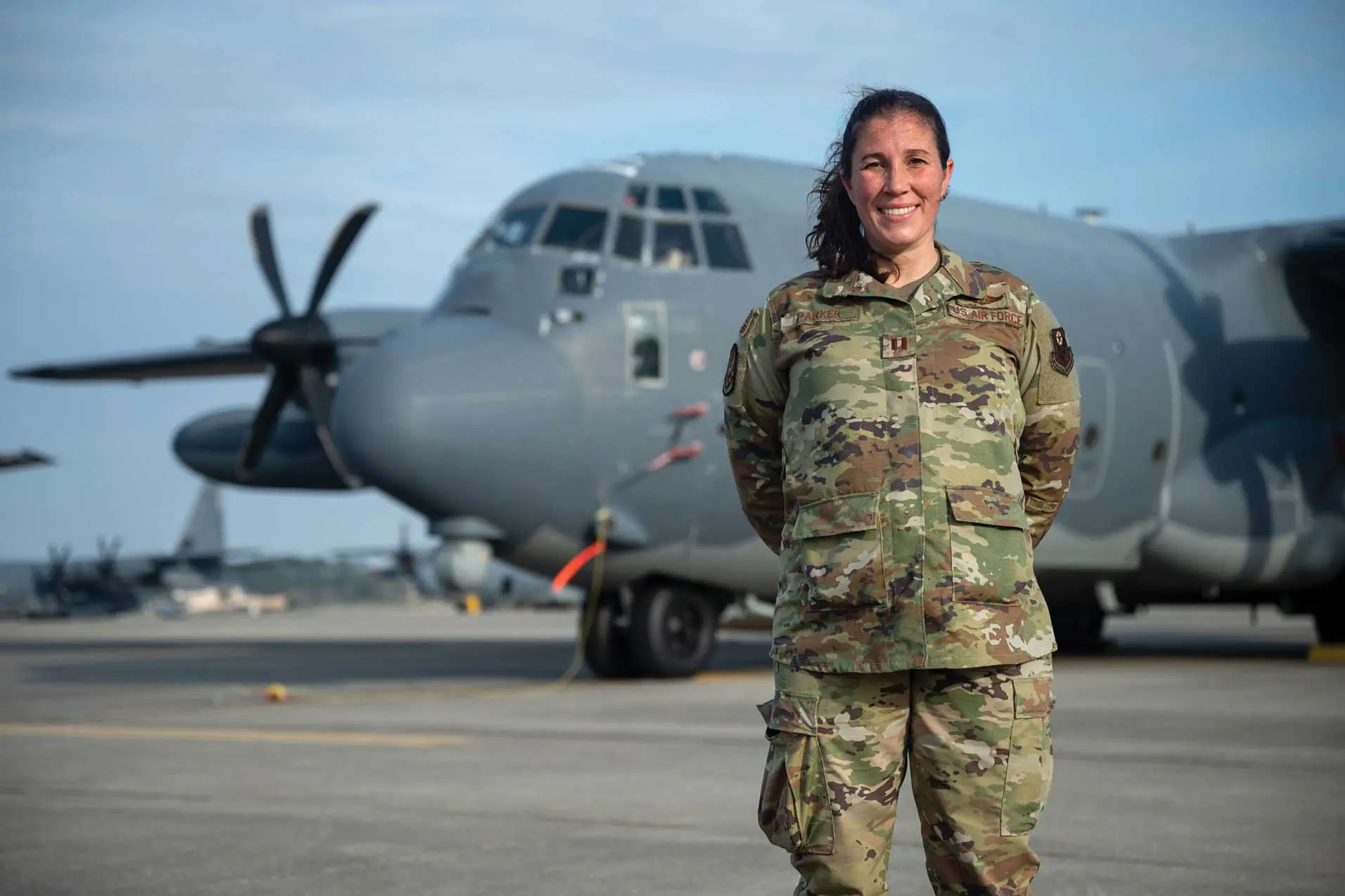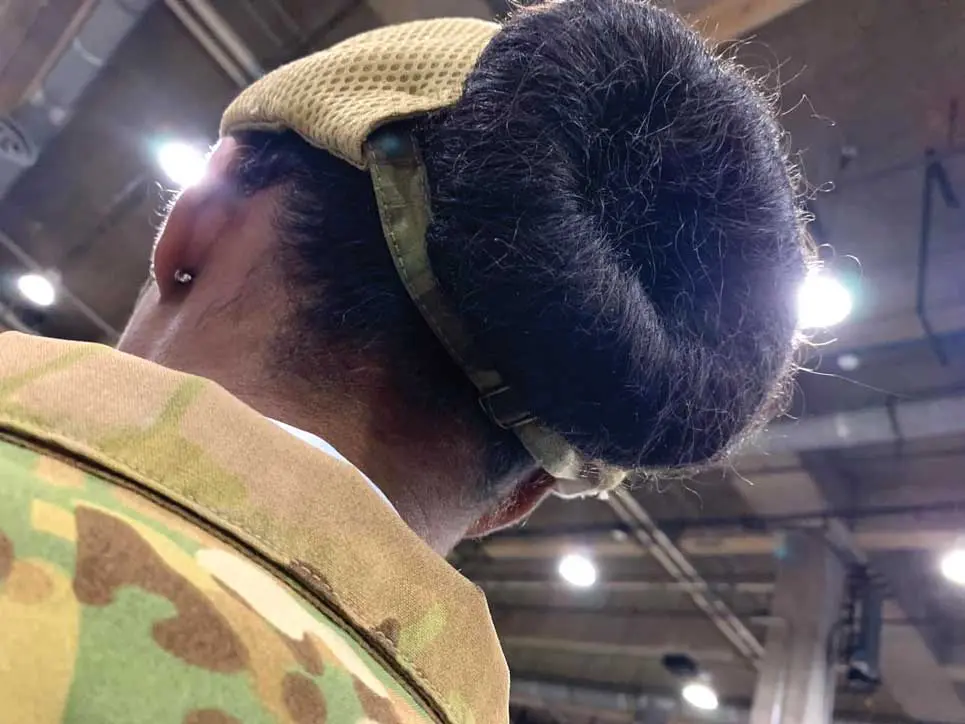Cultivating a Culture of Safety and Inclusivity: How Women Are Identifying Potential Barriers and Recommending Solutions for Mobility Airmen
By MS. LORI HOGAN, STAFF WRITER
According to the 2020 Demographics Profile of the Military Community, nearly 70,000 active-duty women, or 21.1 percent, make up the Air Force. In fact, the Air Force has the highest percentage of women serving across the armed forces. In addition, approximately 95,800 Air Force service members are among a racial minority group. Although the Air Force is making progress, seemingly small gaps exist that can affect the safety, well-being, and readiness of these dedicated Airmen.
In March 2023, The Secretary of the Air Force Office of Diversity and Inclusion hosted the third annual Department of the Air Force Virtual Women’s Air and Space Power Symposium on Facebook. Hoping to build connections and share perspectives, the symposium planners were charged with creating an event that not only fueled inspiration but also empowered Airmen and Guardians to chart their future. Members of the Department of the Air Force (DAF) Barrier Analysis Working Group, including the Women’s Initiative Team (WIT), collaborated with volunteers and served as the symposium’s advisory group.
“For our Airmen and Guardians to serve to their full potential, we have to foster a positive culture and continue to remove barriers,” said Secretary of the Air Force Frank Kendall. “These efforts are part of my call for ‘One Team, One Fight.’ It is the only way we will recruit and retain the best and unrivaled talent, a necessity to maintain air and space superiority.”
Those barriers are best identified by the women and minorities who face gender-specific challenges that their male counterparts often overlook. That is where Reach Athena comes in. This all-women, Airmen-led, Air Mobility Command (AMC) initiative highlights the relationship between diversity and inclusion and its impact on service members’ readiness. Their mission is to collaborate and communicate with Mobility Airmen and Air Force senior leaders to identify potential barriers and recommend solutions to female- and family-centric issues that threaten readiness and retention. Their long-term vision is to effect policy change that retains, cultivates, and recruits the next generation of top-tier talent within AMC so it is always ready to respond to any future strategic challenge.
It is not just policies that these groups study but equipment, uniforms, gear, grooming, and other processes. Maj Jennifer N. Walters, who co-founded Reach Athena when she was stationed at Travis Air Force Base (AFB), CA, along with Maj Kelsey Payton, explained, “What we’re here for is to identify policies that—intentional or not—are driving our talent away, or repelling them from the Air Force,” she said in an interview with the U.S. Department of Defense. Reach Athena—named after the Greek goddess of wisdom and warfare—began in 2020 and is headquartered at Scott AFB, IL.
Another women-centric, forward-thinking group is Rosie’s Spirit. SSgt Sheila Moody and SSgt Cortnee Madrid, aircraft structural maintenance and flight line crew members at Dover AFB, DE, founded this initiative. They experienced challenges with the standard-issued bump caps that protect their heads while working on the aircraft. They named their hats after Rosie the Riveter to remember all the “Rosies” of the past, present, and future. WIT and Reach Athena have also supported their efforts.
The underlying goal across these groups and programs is to identify anything that is antiquated or impedes mission success. That means enacting policies designed to intentionally develop those serving today, not holding on to best practices for the sake of tradition or because that is how it was done in the past. Leaders have come to realize that some of the outdated policies disproportionately affect one gender and have empowered groups like WIT, Reach Athena, and Rosie’s Spirit to help shape them into a more inclusive protocol. Here are just a few of their successes.
FLIGHT DUTIES WHILE PREGNANT POLICY UPDATE
In the past, if a woman became pregnant she was involuntarily discharged from service. Now, of course, women can continue to serve while pregnant. However, limitations still pertain to pregnant aviators that the barrier analysis groups are examining. Previously, if a woman became pregnant, she was automatically taken off flight status. In April 2022, DAF issued a clarification of policies pertaining to aircrew during pregnancy. Since then, the Department has recognized the need to provide aircrew, commanders, and healthcare professionals with greater awareness of and transparency around the process for submission and review of waivers to fly during pregnancy. The Aircrew Voluntary Acceptance of Risk, or AVAR, is a three-part document (including a risk acknowledgment page, an outline of medical risks, and acceptable flight profiles) designed to ensure aircrew have access to the information that will allow them to make the most informed decisions about whether to continue flying during pegnancy. Aircrew who want to be considered for crewed flight duty must personally request to continue flying during pregnancy. AVAR will help guide discussions with healthcare providers and inform members of both known and potential, but unmeasured, risks to make informed decisions. The Air Force is now investigating the possibility of allowing aviators with doctor-confirmed “uncomplicated pregnancies” to continue flying longer, which would increase readiness and positively impact culture.
AMC NURSING MOTHERS POLICY
This policy provides a reasonable break time for nursing mothers to express breast milk. Although this seems relatively minor, women were required to clock out to pump unless they could pump on a regularly scheduled break. Men, on the other hand, were given the freedom to take a cigarette break whenever they needed. This discrepancy had a negative impact on mothers, both physically and mentally. Women who do not pump or breastfeed on a regular basis risk engorgement, a painful condition that can lead to infection and other medical complications. The mental frustration came with having to take unpaid time for a medical issue, which created animosity and job dissatisfaction. The new policy took effect in April 2021 and stated, “The frequency of breaks as well as the duration of each break vary according to the needs of the individual employee and mission requirements.” Commander Gen Jacqueline D. Van Ovost said, “This policy demonstrates our ability to connect and support our Airmen and families in the workplace.” Additionally, it provides a number of benefits to the employer to include increased productivity, organizational loyalty, job satisfaction, and employee retention.
ROSIE’S SPIRIT BUMP CAPS
Bump caps, a regular ball cap with a hard plastic insert, were issued at Dover Air Force Base to prevent head injuries. However, Sheila Moody and Cortnee Madrid found that the hats were creating a safety hazard for females. Most maintainers using power tools must wear their hair in a bun. That hairstyle prevents the bump cap from being worn safely, correctly, and effectively, especially for women with thick hair or women of color who wear their hair in braids. In addition, the Velcro on the strap painfully pulled and ripped their hair out of the bun, leaving it looking messy and unprofessional. They noticed that women would take their bump caps on and off numerous times during a shift, depending on their location, leaving women’s heads vulnerable to injury.
Moody and Madrid took their concerns to the Maintenance Group Commander, Col Bary Flack. “He informed us that the bump caps would not go away, but if we could fix the issue, he would be open to ideas. From that day forward, we have worked hard to make a ball cap fit for women a reality,” said Moody.
After a year of designing prototypes and working with multiple companies, they created a female ball cap that not only fixed the issue most female maintainers have but what most military women have. The hat offers a larger opening for most buns and ponytails. They replaced the Velcro with a buckle to avoid snagging hair.
When they took their prototype to the AF Uniform Office team for feedback, they were met with another challenge. They liked the design but were not willing to make two types of caps, one for men and one for women. They would need to design a prototype that would be universal, so back to the drawing board they went.
The new cap still had a large opening for buns and ponytails but was less dramatic than the original design. They added elastic bands to both sides of the OCP straps to allow clearance of different hairstyles, which also made it feel more like a fitted hat on men. Next, they added a satin insert option to accommodate different hair types and prevent hair damage. To adhere to the “one size fits all” theory, they made just two sizes that would fit smaller or larger head sizes. This specific insert did not need to be modified and fit in the new design for bump cap use. Lastly, they found more than 50 percent of the materials to be U.S. made, including the OCP print, mesh material, and the sweatband seam.
The AF Uniform Office approved the new prototype, and it is now being rolled out at Dover and Travis Air Force Bases for testing and research. Reach Athena has helped them through the legal process and has allowed them to share booth space at the Airlift/Tanker Association convention to showcase the hats and conduct surveys. “This has been a great experience,” said Madrid. “None of it would have been possible without the help of leadership. They provided us the tools, contacts, and support to ensure our success.” Moody said, “We never considered giving up. Each challenge made us more determined. Now, we are setting our sights on making this style of caps available to all U.S. Armed Forces. It may take time, but we remain committed to the safety and well-being of our fellow Airmen.”



